Types of Erasers
Having different types of erasers in your drawing toolbox will be useful for producing realistic drawings.
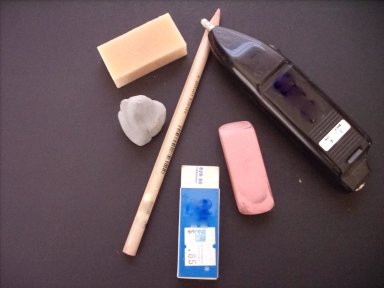
Various types of erasers have been around in some form or another for quite some time.
Pieces of crust-less bread were used as erasers in Japan during the years of 1868 to 1912.
In 1770, Edward Nairne, an English engineer, sold natural raw rubber erasers for the price of three shillings per half-inch cube.
Because raw rubber was perishable, in 1839, a man named Charles Goodyear used the process of vulcanization to cure the rubber and make it more durable.
In 1858, Hymen Lipman received the first patent for attaching an eraser to the end of a pencil. Later, the patent was invalidated because it was determined to be a combination of two devices rather than a uniquely new product.
Wikipedia has additional information here.
Types of Erasers
There are different types of erasers available to an artist...
- the Pink Pearl©
- peel-off pencil type
- sharpenable pencil type
- gum type
- kneadable eraser
- Blu-Tac©
There are of course many variations of these erasers; but this list will give you a basic idea as to what kinds of erasers there are to choose from.
As with any tool used by you it is important to test drive them for awhile to get used to them...different erasers work in different ways.
The Pink Pearl© Eraser
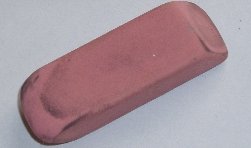
Ahhh, the familiar smell of that old pink standby.
There are other pink erasers out there, and they will do what the the Pink Pearl© eraser does, but... that smell! I believe a pink eraser is best when used on a sturdy, smooth paper. It is slightly abrasive and unsuitable for paper that has a lot of tooth (paper that feels rough to the touch). This kind of paper has a tendency to ''fuzz up'' when erased with an abrasive type of easer.
The Peel-Off Pencil Type Eraser
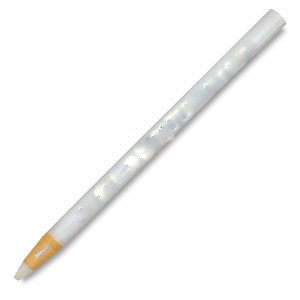
These are great when you need to erase something in a small area, or when making a thin wisp of highlight in the hair, because they can be sharpened to a point using any standard pencil sharpener.
I wipe the tip off between each use so that the graphite is not smeared back on to my drawing.
Sharpenable Pencil-Type Eraser
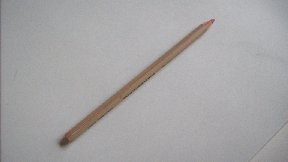
This eraser is encased in a wooden shell much like a pencil, and can be sharpened to a point.
I use it to create highlights in hair.
The eraser is a hard pink type of rubber. Be careful when using this eraser so as to not damage your paper with excessive erasing.
Gum Type Eraser
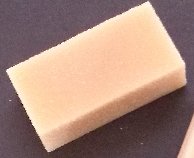
Art-gum Erasers are very soft erasers that tend to be sort of crumbly when used.
The crumbs are believed to help in absorbing the graphite.
Kneaded Eraser
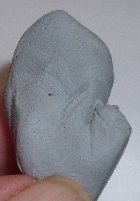
The kneaded eraser is the primary type of eraser that most graphite/charcoal artists use.
It picks up the graphite without smearing or damaging the paper. It can be shaped into a point to lift out small highlights in the eyes and hair. It's unique in that to clean it you simply stretch it out and fold (knead) it over on itself. If I had to choose only one eraser, I'd probably pick this type.
Blu-Tac©
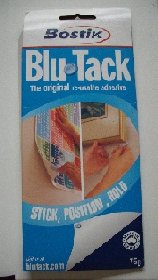
I have just recently discovered Blu-Tac© adhesive putty. I found another artist who raved about how wonderful it was for lifting out pencil marks. After looking everywhere here in Wichita for it, I got on the “net” and found out that Blu-Tac© was really hard to find here in the States. I finally had to order it on-line. It has similar properties of a kneaded eraser except it's a little stickier.
************************************************************
So is this all the types of erasers there are? Absolutely not! There are are many kinds of erasers that I have not talked about here. Try out different ones and let me know when you find an eraser you love, and how you use it.
Subscribe to my Newsletter